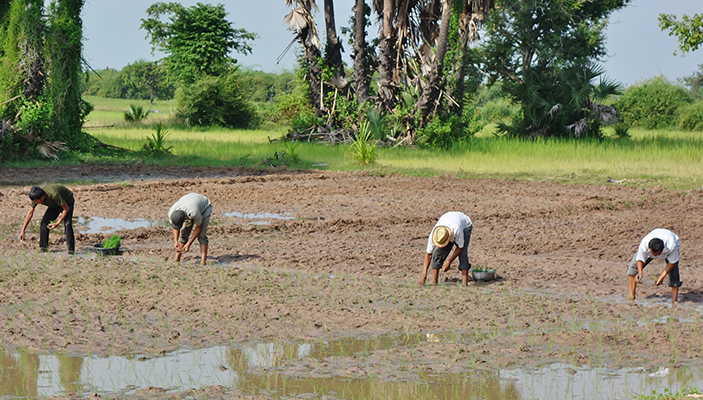DEVELOPMENTS
Establishing a Model at the Local Level for Science-Driven Climate Adaptation
Oct 18, 2016
Countries in the Lower Mekong Basin (LMB)—Cambodia, Lao PDR, Thailand, and Vietnam—are home to rural populations that are chronically poor or vulnerable. Many of these families still produce much of their own food and are acutely sensitive to weather events such as floods, droughts, and extreme storms that cause crop failures and serious hardships. In recent years, rural communities in the LMB have experienced their share of extreme weather.
In 2011, the worst flood in Thailand’s history killed more than 800 people across 86 percent of its provinces and reduced revenue from rice exports by nearly 40 percent. That same year, heavy rains in Cambodia affected 1.5 million people and caused $624 million in economic losses—by far the most expensive natural disaster in Cambodian history—damaging or destroying 10 percent of the country’s rice fields. In Lao PDR in 2015 and 2016, surface temperatures of 40 degrees Celsius (104 degrees Fahrenheit) and higher, along with delayed starts to the rainy season, upended traditional crop planting calendars. The same drought contributed to severe food and water shortages in Vietnam, with saltwater intrusion also adversely impacting rice yields in coastal provinces.
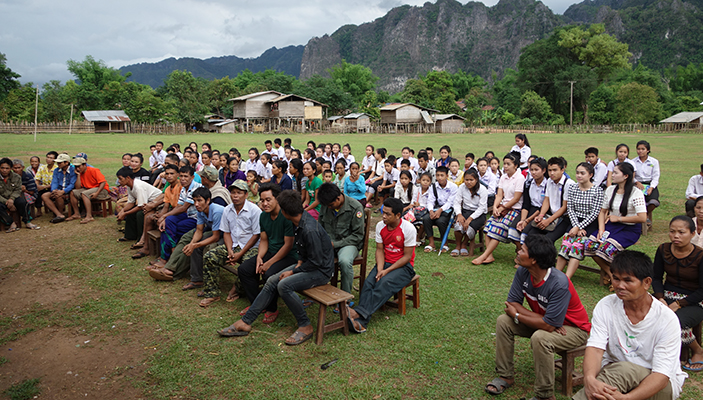
Preparing for climate change requires an understanding of climate science, detailed analysis of how specific livelihood sectors are impacted, and local knowledge of community context and experience. The U.S. Agency for International Development (USAID)’s Mekong Adaptation and Resilience to Climate Change (Mekong ARCC) project, a $9.4 million program implemented by DAI from 2011 to 2016, integrated high-level climate science with community decision making, enabling local people to implement and test locally developed rural adaptation strategies. This joining of high-level science with local understanding underpinned Mekong ARCC’s key objective: to increase community adaptive capacity and resilience to the negative impacts of climate change.”
##Knowing the Climate
Before diving in with adaptation programming, our Mekong ARCC team required a clear understanding of local climate projections and their potential impacts on local livelihoods. The International Centre for Environmental Management performed downscaled climate science modeling for us, and interpreted the data against the eco- and agrarian systems across the Basin. We used these findings to pinpoint the locales projected to experience the greatest changes in temperature and rainfall over the next 50 years. Our team then asked the communities within to validate their experience with weather trends, define their self-identified vulnerabilities, and prioritize adaptation strategies that address their unique circumstances.
To produce these strategies, Mekong ARCC established a framework that connects climate science, local impacts, and decision making. This framework also guided the development and community-led implementation of adaptation measures that benefited close to 30,000 rural people in communities of 100 to 4,000 in Cambodia, Lao PDR, Thailand, and Vietnam.
This evidence base of adaptation solutions tested by the project can now be brought to a larger scale in LMB government and development partner programs. Given the commitments enshrined in the Paris Climate Agreement, we also identified ways to attract global climate financing to LMB countries that could support further uptake and scaling of these rural adaptation solutions.
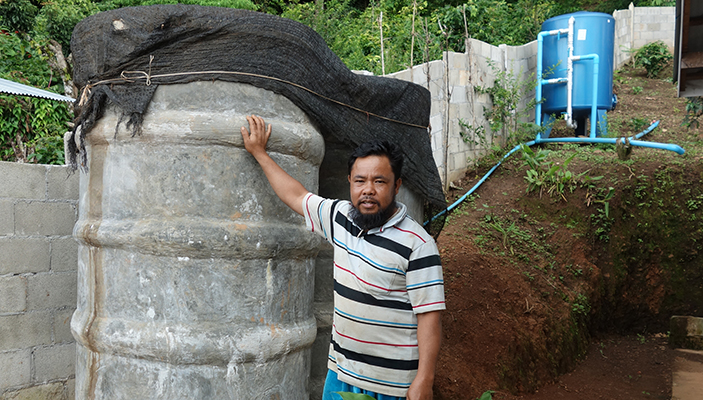
##Identifying the Most Vulnerable
The two-year USAID Mekong ARCC Climate Change Impact and Adaptation Study for the Lower Mekong Basin provided our team with a clear understanding of how the livelihoods and ecosystems of rural LMB economies were vulnerable to a shifting climate. By bringing together scientists, modelers, and livelihoods experts, we developed an approach to define and quantify changes in hydro-meteorological variables over time, and then assess how these changes affect local livelihoods. We detailed how communities will have to cope with threats such as increased temperatures, more variable weather patterns, more frequent and more severe droughts and floods, stronger storms, and, in the Mekong Delta, rising sea levels and corresponding increases in salinity. These scenarios were assessed by livelihoods experts to determine their impacts on sectors such as agriculture, fisheries, livestock, and non-timber forest products.
Using the study, the Mekong ARCC team reviewed potential evidence-based adaptation solutions with target communities across the LMB. But rather than determining the threats and impacts for these communities, we welcomed local perspectives into a decision-making approach that included:
- Community Climate Story—self-mapping of resources, assets, and hazards, and ranking of weather threats and livelihood vulnerabilities.
- Scientific Climate Story—informed projections to improve community understanding of how climate is expected to affect local livelihoods.
- Shared Understanding—scenario-planning workshops that identify community priorities and assist villagers to visualize their adaptation options in the context of the scientific climate story.
- Planning Adaptation Initiatives—with cost-benefit analyses and assessments of sustainability and soundness, from perspectives of both local development and climate change adaptation.
- Activity Implementation by Communities—with local monitoring and evaluation to ground-truth livelihood impacts and facilitate adaptive management.
This process—called the USAID Mekong ARCC Integrated Vulnerability Assessment and Adaptation Decision Making Framework—was used at project sites to select and design context-specific technical solutions to strengthen livelihood resilience in the face of climate change. We conducted science-based and community-based assessments as distinct processes. Bringing them together in a facilitated process, we developed a more holistic understanding, accounting for both longer-term climate trajectory and on-the-ground observations of climate effects, livelihoods, and community resources. This broader understanding enabled us collectively to develop adaptation solutions that best fit the needs of individual communities.
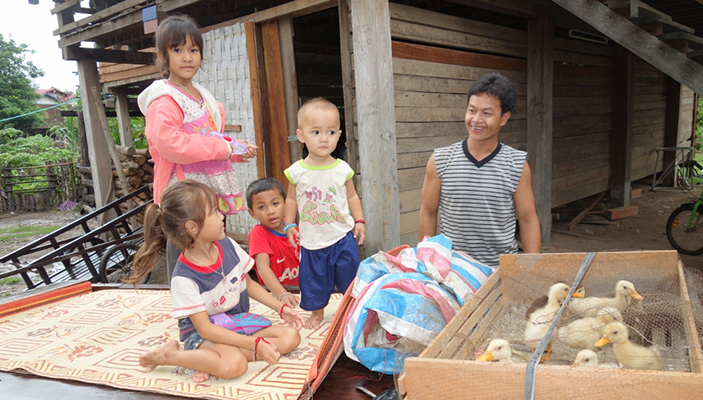
##Communities’ Plans of Action
The community action plans facilitated by Mekong ARCC vary widely, reflecting the diverse contexts and priorities across Cambodia, Lao PDR, Thailand, and Vietnam to protect important livelihoods and improve food security and wellbeing. They can include:
Water Infrastructure and Management: Construction or rehabilitation of water supply systems, including the installation of water filtration systems, and use of water meters to monitor and respond to community water usage; irrigation and flood control projects, such as construction of canals to water fields during dry periods and dykes to mitigate floods.
Climate Smart Agricultural Techniques: Practices that build resilience into farming systems, such as crop diversification to reduce reliance on monocultures, and use of native rice and other crop varieties suited to extreme climatic conditions; integrated farming approaches to conserve valuable soil and water resources, enhance positive feedback loops, and foster sustainability.
Livestock Management: Construction of livestock housing that improves ventilation and drainage; incorporation of organic bed materials with enzymes to break down waste (bio-mattress) and produce fertilizer for use on gardens or for sale—supplementing household income; native chicken and pig species that can tolerate higher temperatures to maintain their productivity.
Aquaculture: Improvements to rice-shrimp rotational farming system, such as installing shrimp nurseries to improve productivity of aquaculture ponds; monitoring water quality to inform management decisions; improving selection, testing, and cooperative purchase of post-larvae shrimp; small-scale frog and fish ponds to provide additional protein and income.
Forest Restoration and Management: Building community organization and social capital by forming management committees that protect and regulate the use of community forests; forest plantings to reduce soil loss from heavy rains on steep slopes or maintain the water table in areas expected to experience longer droughts; workshops on the use of mangroves to minimize coastal erosion.
Community Organization and Capacity Building: Awareness-raising focused on climate change and adaptation, and monitoring and interpreting weather forecast information; monitoring, evaluation, and adjustment of ongoing adaptation activities; incorporation and mainstreaming of climate change adaptation into planning structures and processes; additional training on alternative livelihoods, reducing risk by diversifying income generation potential.
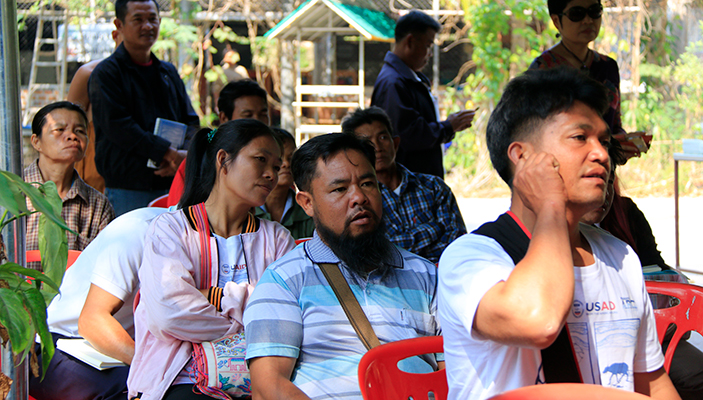
##Upscaling Climate Adaptation Activities
To broaden the impact of these rural adaptation strategies, the project team pursued two strategies:
Ground-Up Pathways: We engaged national and local government actors to help them learn from local adaptation activities and incorporate local lessons and techniques into their larger programs. For example, our work in rice-shrimp integrated farming methods in Vietnam covered a trial area of 54 hectares in a single coastal farming commune. By involving the national Directorate of Fisheries, however, we ensured that a new national, climate-sensitive rice-shrimp model incorporating the project’s lessons and experiences will be scaled in similar landscapes across five provinces and include up to 250,000 hectares of coastal farmland.
Financing Pathways: While adaptation financing is evolving, Mekong ARCC sought to simplify the description of the marketplace and identify practical lessons for LMB stakeholders in a paper titled “Harnessing Climate Finance for Rural Adaptation in the Lower Mekong Basin: Opportunities, Constraints and Future Prospects.” We highlighted the paramount importance of “packaging” proposals as well as aligning national adaptation plans and strategies with the objectives of funding entities. For example, packaging multiple small projects with relatively standard designs could help officials achieve the scale, replicability, and impact needed to attract financing.
Addressing the complex challenges faced by local people as a result of climate change requires bringing the scientific and development perspectives together so they pull in the same direction. The Mekong ARCC experience and evidence base, established by connecting science, local impacts, and decision making, demonstrates real success and should be replicated and scaled—both in the LMB and beyond—to achieve adaptation goals and increase the resilience of people at risk.
